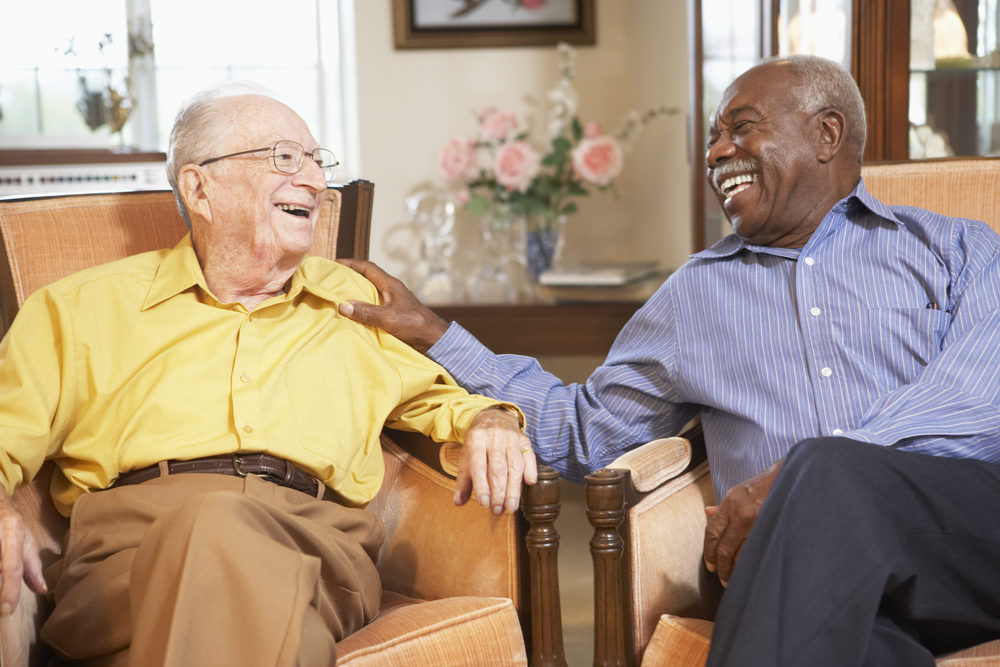
My last two posts have been about what medication to use for agitation in dementia. The biggest question I was left with in both occasions was: since medication seems to be of limited use and carry the risk of inducing some potentially serious side-effects can something be done which does not rely on using drugs?
It just so happens that in June 2014 a Health Technology Assessment report was published, which undertakes an extensive systematic review of the literature on alternatives to medication for agitation in dementia (Livingston et al. 2014). Before I go any further I should say that I have worked with Professor Livingston, the lead author of the report.
For background on the topic I’d like to refer you to my two previous blog posts. Having said that I would like to add the fact that the cost of the treatment of dementia is currently around £23 billion in the UK (Luengo-Fernandez et al. 2010). For comparison the total NHS budget was £110 billion in 2009 (Chantrill 2009). Cases are expected to treble by 2030 with the rising number of older people.
The report uses data from the London and South-East Region Alzheimer’s Disease epidemiological study to support some of its conclusions (Livingston 2007). It is based on that data that the report estimates that agitation more than doubles the cost of caring for someone with dementia.

Agitation more than doubles the cost of caring for someone with dementia.
Methods
The authors searched twice for relevant articles on Web of Knowledge (incorporating MEDLINE); EMBASE; PsycINFO; The Cochrane Library and many other relevant sources. In addition they hand-searched reference lists of included papers and relevant reviews, and they contacted authors of the papers they included to ask about relevant studies.
They included papers which described quantitative results for agitation of a non-pharmachological intervention in individuals with dementia with a comparator group. They assessed quality of studies using the CEBM Levels of Evidence approach (CEBM, 2009). They awarded points based on quality and prioritised higher quality evidence. They identified the intervention categories in table 1 which they reported on in aggregate.
Intervention categories
- Activities
- Music therapy
- Sensory interventions
- Training paid caregivers in person-centred care
- Light therapy
- Home-like care
- Aromatherapy
- Training family carers in behavioural management
- Training family carers in CBT
- Exercise
- Changing the environment
- Dementia-specific therapies
- Pet therapy
Only light therapy studies were homogenous enough for meta-analysis. For the rest, the authors calculated standardised effect sizes (SESs) with 95% confidence intervals (CIs) where possible. The authors also undertook a health economic analysis.

The review covered everything from music therapy to pet therapy.
Results
Out of the 1,916 studies they identified 167 met their criteria. They then focused on the 97 higher-quality studies (levels 1b, 2b and 2c).
So what were the alternatives to medication for agitation in dementia?
Interventions that work
- Activities reduce agitation while they are in place (SES = -0.8 to -0.6). Individualising them did not seem to make them more effective
- Music therapy following a specific protocol (but not otherwise) reduces agitation (SES = -0.8 to -0.5)
- Sensory interventions (all of which use touch at least) also reduce agitation (SES = -1.3 to -0.6). In this case it reduced even severe agitation. This was effective during the intervention only. Interestingly some studies included ‘therapeutic touch’ which, as expected, did not have any advantage over garden-variety massage
- Training staff in person-centred or communication skills was effective in reducing severe agitation, but only if this was supervised in an ongoing fashion (SES = -1.8 to -0.3). The effects were sustained over 6 months
- Dementia care mapping was similarly effective in severe agitation (SES = -1.4 to -0.6) and the effects were also sustained over 6 months
- All the evidence relates to care homes and there is hardly any evidence for any other setting. Only the last 3 interventions listed have evidence of efficacy in severe agitation
Interventions that definitely do not work
- The authors were able to establish that light therapy, home-like care and aromatherapy do not provide any benefits whatsoever.
- Home-like care in particular may be counterproductive.
Interventions with inconclusive results
- Training family carers in behaviour management definitely does not work for severe agitation, but the authors could not draw conclusions on its effectiveness with milder agitation
- Training family carers in CBT did not help with agitation in the three studies analysed. The authors concluded there was insufficient evidence to evaluate it for reducing overall agitation
- The results for music therapy without protocol were inconclusive mainly due to the quality of studies
- Exercise as an intervention was also inconclusive, again due to study quality issues
- Staff training without supervision was not effective
- Environmental intervention studies were too small to draw any conclusions
- Dementia-specific interventions (cognitive stimulation and validation) were not effective for agitation but neither the intervention nor the studies evaluating them are designed for that outcome
- Pet therapy studies were too small and had mixed results. No conclusions could be drawn
- There was not enough evidence to give recommendations on simulated presence, way-finding and other mixed interventions
Health economic analysis
- The authors came up with a new cost-effectiveness model for interventions designed to have an impact on NPI agitation scores.
- Based on that they found that a multicomponent intervention in participants with mild to moderate dementia had a positive monetary net benefit: an 82.20% probability of being cost-effective at a willingness to pay for a quality-adjusted life-year of £20,000.

All the evidence relates to care homes and there is hardly any evidence for any other setting.
Limitations
- I could not find any limitations with the study’s methodology in itself. Most of the limitations come from the underlying evidence the study reviews.
- Due to the nature of the studies available the overwhelming majority of the evidence was for care home environments.
- A lot of the interventions had inconclusive results due to poor study design or small numbers.
- There was very little health economic data available for the authors to use in their analysis. There is was little information about long-term efficacy.
- It is also impossible to determine whether some of the interventions might be more suited to some dementia diagnoses than to others.
Conclusions
This produces a clear list of interventions that are worth implementing in care home settings: training and supervision of staff in any form of person-centred care and sensory stimulation for severe agitation, and music therapy and activities for less severe forms. We know we definitely do not want to use aromatherapy, light therapy and home-like care environments. Family carer training seemed to have quite disappointing results.
With the exception of care in home-like environments there do not appear to be detrimental effects to these interventions and their costs are comparable to those of using long-term medication with probably greater benefits.
My problem as a clinician is that I will be called to see and issue recommendations for a specific individual and these interventions work at the level of the home. It makes no sense for me to recommend training for the staff looking after the patient I have come to see or to recommend a sensory intervention, activity or protocolised music therapy for them alone.
This will be an ongoing barrier for adoption as there are no clear immediate incentives for homes to put them in place. The economic analysis will probably not persuade the average care home manager. The solution might be at the level of commissioning where these things are demanded of providers as requirements for placement.
For my part, I will try to continue to see care home managers whenever I go visit and share this information. Some of them might be persuaded to introduce these even if they are just as differentiators from other providers or to enable to them to accept the more agitated individuals without losing the placement.

It’s likely that commissioners will be driving these changes, rather than care home managers or individual clinicians.
Links
Chantrill C. Public Expenditure Statistical Analysis, 2009. (Last accessed 4 April 2014).
Livingston G, Kelly L, Lewis-Holmes E, Baio G, Morris S, Patel N, et al. 2014. A systematic review of the clinical effectiveness and cost-effectiveness of sensory, psychological and behavioural interventions for managing agitation in older adults with dementia. Health Technol Assess 2014;18(39).
Livingston G, Walker AE, Katona CLE, et al. 2007. Antipsychotics and cognitive decline in Alzheimer’s disease: the LASER-Alzheimer’s disease longitudinal study. J Neurol Neurosurg Psychiatry 2007;78:25–9.
Luengo-Fernandez R, Leal J, Gray A. Dementia 2010. The Economic Burden of Dementia and Associated Research Funding in the United Kingdom (PDF). University of Oxford: Alzheimer’s Research Trust 35; 2010.
Levels of Evidence. Centre for Evidence-Based Medicine website (last accessed July 2014).


RT @Mental_Elf: Alternatives to medication for agitation in dementia http://t.co/IimUU41lrR
V interesting piece >> “@Mental_Elf: Alternatives to medication for agitation in dementia http://t.co/xGf9x6ANsQ”
Alternatives to medication for agitation in dementia. http://t.co/iAO3xxRpr4
MT @Mental_Elf: Alternatives to medication for agitation in #dementia http://t.co/3R35n4zRrg
Alternatives to medication for agitation in dementia: Andrés Fonseca summarises the findings of a recent syste… http://t.co/1FoyjOYa6b
Today @AndrFon on sensory, psychological & behavioural interventions for managing #agitation in #dementia http://t.co/G2zHCK4hjr
Agitation more than doubles the cost of caring for someone with #dementia http://t.co/G2zHCK4hjr
@Mental_Elf so behavioural issues are important in dementia. More proof it’s a psychiatric problem not neurological
Mosaic Training Consultancy Ltd liked this on Facebook.
Gemma Roberts liked this on Facebook.
Olivia Cialdi liked this on Facebook.
RT @Mental_Elf: Today @AndrFon on sensory, psych. & behavioural interventions for managing #agitation in #dementia http://t.co/NlFUBcCEtL
Tx@MentalHealth_Ed for post on our managing agitation in dementia. Next phase care home implementation@MARQUEProject http://t.co/ucVUsKnjzN
New HTA review on agitation in dementia looks at everything from music therapy to sensory interventions http://t.co/G2zHCK4hjr
@Mental_Elf @TeriSanders11 interesting to think through #engaging with people with #dementia – skills for staff
@Mental_Elf good to see this scope of music therapy evidence & indications at cost effectiveness. Evidence to build on #MusicTherapy
Mental Elf: Alternatives to medication for agitation in dementia http://t.co/Qa2jN8soP2
New HTA review on agitation in dementia http://t.co/ggWoS7P0LP @davidstorm65
The Mental Elf liked this on Facebook.
.@DementiaUK Interested in your thoughts on our blog about alternatives to medication for agitation in dementia http://t.co/G2zHCK4hjr
@Mental_Elf @DementiaUK. Like the blog. staggering cost of agitationa s well as individual unhappiness.
@Gill_Livingston @Mental_Elf Us too – very interesting read. Great sources too. We’re big fans of evidence based therapeutic interventions
Alternatives to medication for agitation in dementia http://t.co/e9400rGBSL via @Mental_Elf
New evidence on alternatives to medication for care homes to help people with agitation & dementia http://t.co/G2zHCK4hjr
“Alternative to medication” makes it sound optional. Maybe in this context meds should be called “alternative to training staff” @Mental_Elf
The alternative to medication in this case being “look after people properly”, @AlexBThomson @Mental_Elf
@Mental_Elf I work in a service that implements “the Newcastle model”: formulation led mostly behavioural interventions in care homes for/
@Mental_Elf distressed behaviour. It often contains many of the components you suggest – and anecdotally appears to produce benefit!
RT @Mental_Elf: Don’t miss: Alternatives to medication for agitation in dementia http://t.co/G2zHCK4hjr #EBP
Alternatives to medication for agitation in dementia #occupation #activity #flow http://t.co/uQvGjAfVF1
Alternatives to medication for #agitation in #dementia – The Mental Elf http://t.co/eNDmJALiOS
Alternatives to medication for agitation in dementia http://t.co/RW0EGPTftt via @sharethis
Sandra Thibault liked this on Facebook.
Music, playing activities, human touch or communication highly reduce #dementia agitation @Mental_Elf #mentalhealth http://t.co/aP9GxnaQL7
@dekbutt research into interventions for agitation and dementia in care homes http://t.co/ARhVQFZPJB
Alternatives to medication for agitation in #dementia http://t.co/ohrDafUsJ7 via @mental_elf
RT
Dr Livingston inspired my career 20 years ago – Alternatives to medication for agitation in dementia http://t.co/ptOYZEIDr3 via @sharethis
Alternatives to medication when people with dementia are agitated from @Mental_Elf: http://t.co/lPPK06YqD6
@DementiaJournal @DFC_rural @Mental_Elf @MowbrayORyan #mindfulness for carers?
Honourable mention also goes to @AndrFon for his blog on alternatives to medication for agitation in #dementia http://t.co/G2zHCK4hjr
The Mental Elf. Alternatives to medication for agitation in dementia http://t.co/hrm8HigHwY
@Mental_Elf suggests new evidence on alternatives to medication 4 care homes to help people with agitation & dementia http://t.co/h6C0FFgjoq
Alternatives to medication when people with #dementia are agitated from @Mental_Elf: http://t.co/M3W1DIoyxd via @DementiaJournal
http://t.co/ZVGHPmMttb
@MrDarrenGormley http://t.co/ZVGHPmMttb
Sandra Thibault liked this on Facebook.
The Mental Elf liked this on Facebook.
Mosaic Training Consultancy Ltd liked this on Facebook.
Gemma Roberts liked this on Facebook.
Olivia Cialdi liked this on Facebook.
@legalaware @DementiaJournal Thank you for this resource, esp http://t.co/4i8C6JVN7u